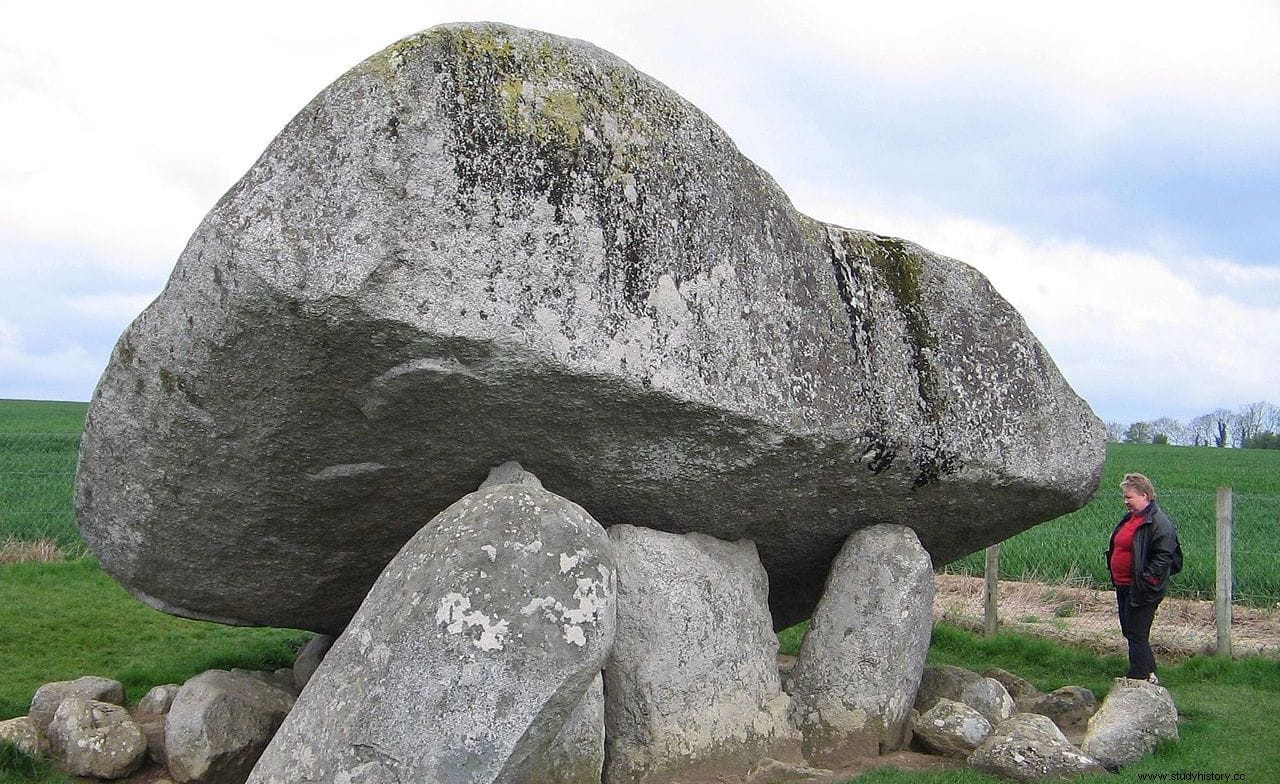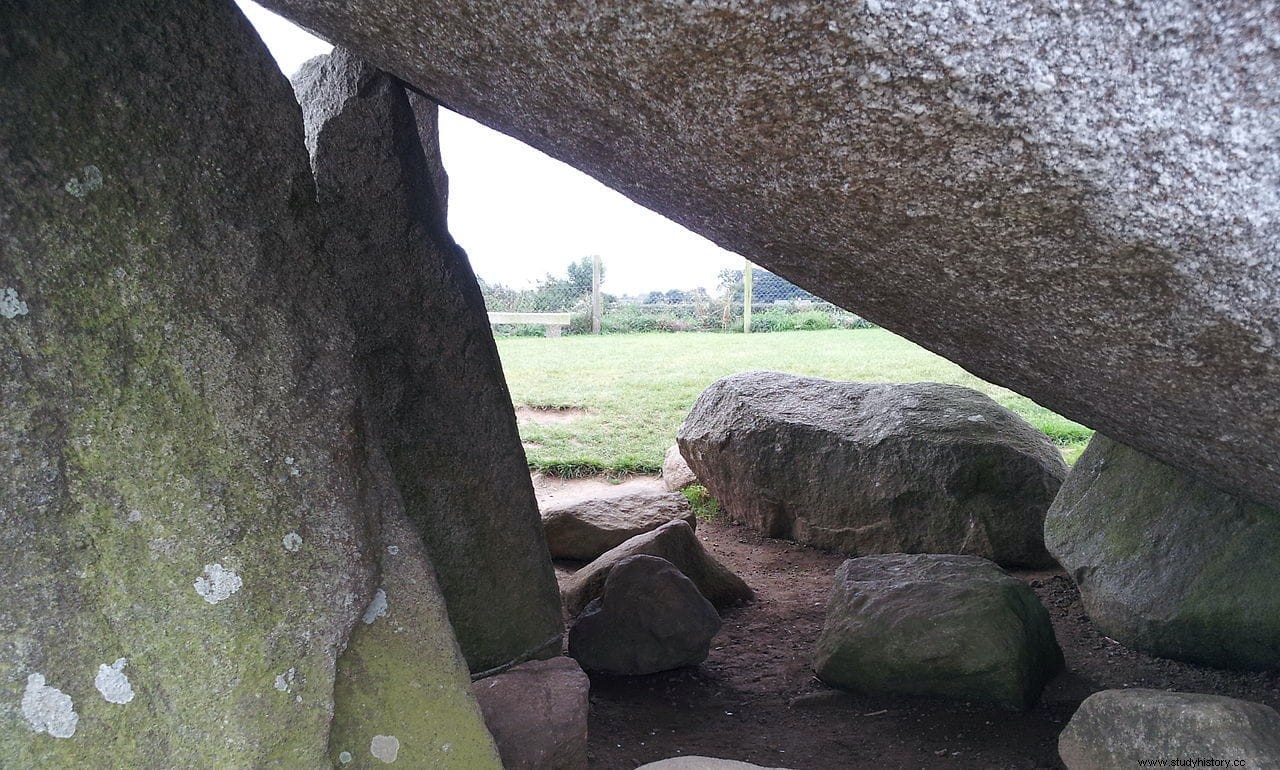Relatively little known outside of Ireland, the Brownshill dolmen is considered the largest and heaviest in Europe.
Although its official name is Kernanstown cromlech , is popularly known as Brownshill dolmen , perhaps to avoid the ambiguity of the term chromlech , which in French and Spanish applies to stone circles like Stonehenge, but in English is synonymous with dolmen .
A dolmen is a megalithic construction formed by several stones in a vertical position, covered by a larger one that rests on them and forms a kind of chamber. Sometimes they are covered with earth forming a burial mound or a small artificial hill.

Although we normally associate these types of prehistoric monuments with places like the United Kingdom, Ireland, France, or Spain, they can actually be found in many areas of the world. And precisely the largest concentration of dolmens in the world is in a region that many would not expect:the Korean peninsula.
Brownshill is located about 3 kilometers east of the Irish town of Carlow, in a field near the Hackestown road. Its dating is estimated between 4000 and 3000 BC. in the Neolithic period, probably built by the first farmers who inhabited the island.
It is believed that it could have had a funerary use as a tomb, originally being covered by an artificial mound of earth, given the angle of inclination that it presents, but everything is speculation because in reality the monument has never been excavated. In many of the other 174 similar monuments scattered throughout the country, remains of burials, burned human bones, ceramics and flint artifacts have appeared.

The most significant thing is its size, which may not be well appreciated in the photographs, but which those who have visited it in person report as certainly impressive.
It is not for less because with the estimated 103 tons of weight of the upper stone it is considered the largest singular dolmen in Europe , that is, formed by a single cover stone. Other dolmens, such as the Menga dolmen in Antequera, are much larger in size, but are made up of several capstones (the largest of which make up the Menga assemblage is estimated at 180 tons).
And of course there are heavier megalithic monuments, like the Kerloas menhir in France, which weighs 150 tons. For comparison, the trembling rock of Huelgoat (which anyone can move with a little skill) weighs 137 tons, although it is obviously not a dolmen.
